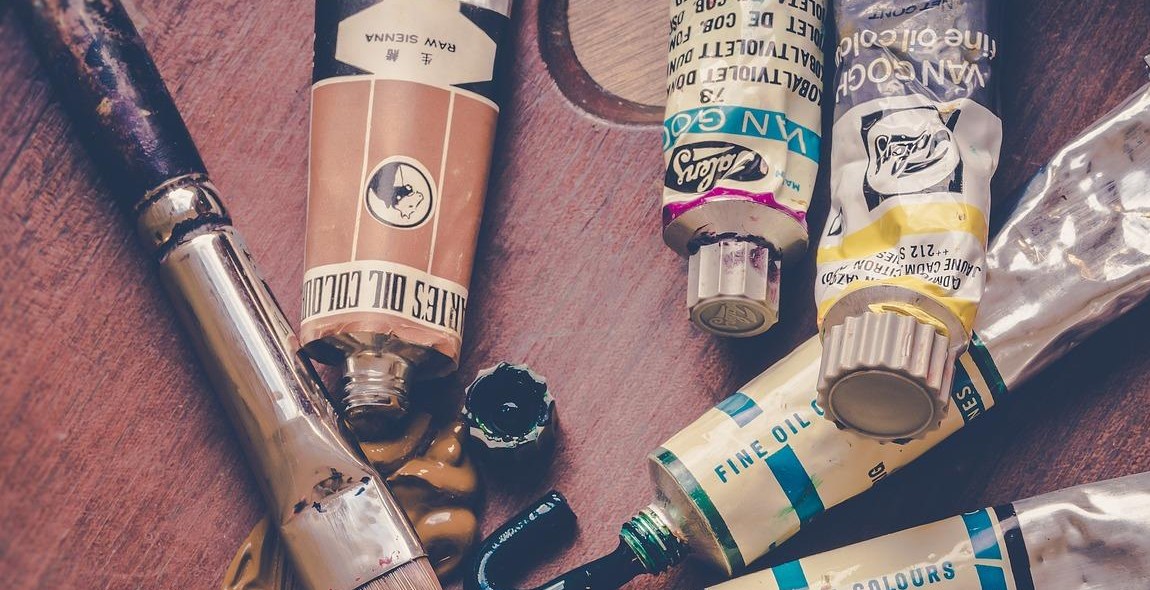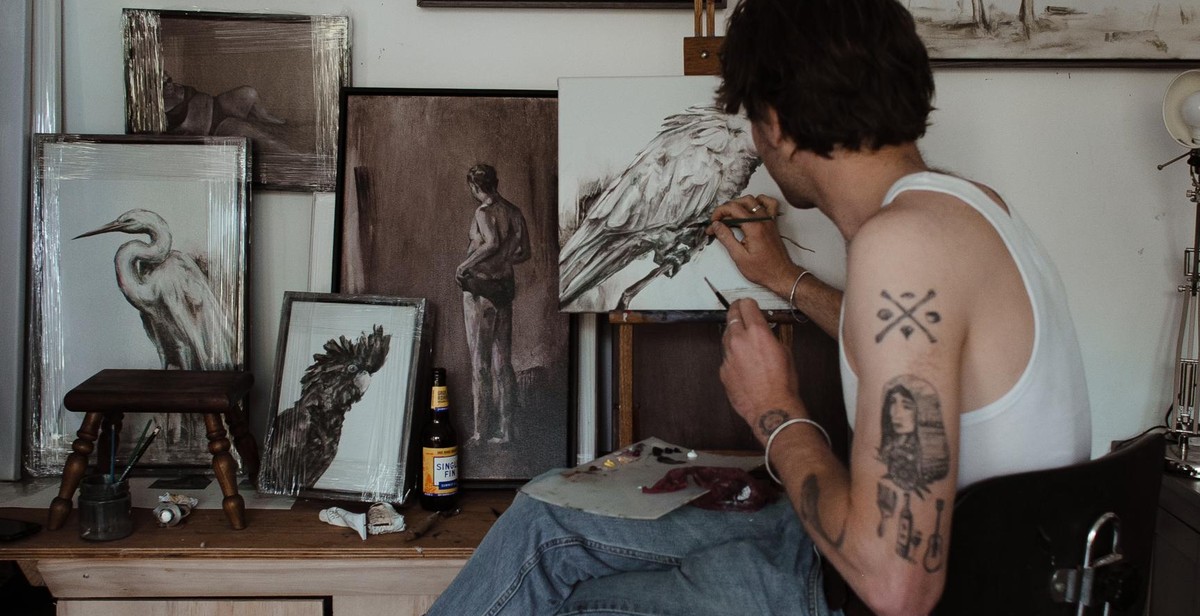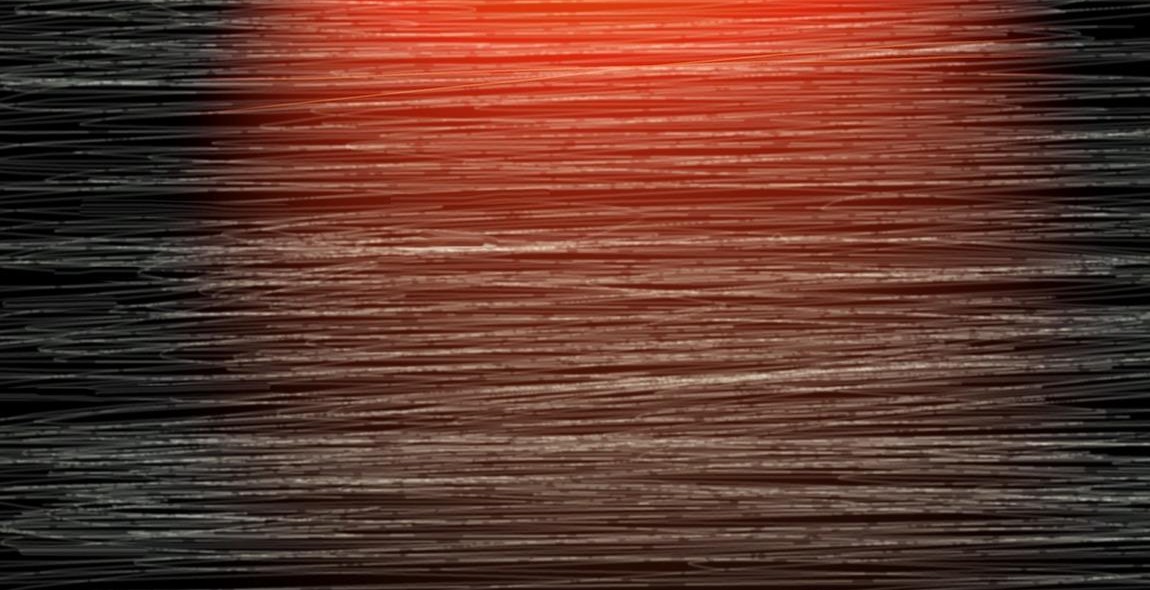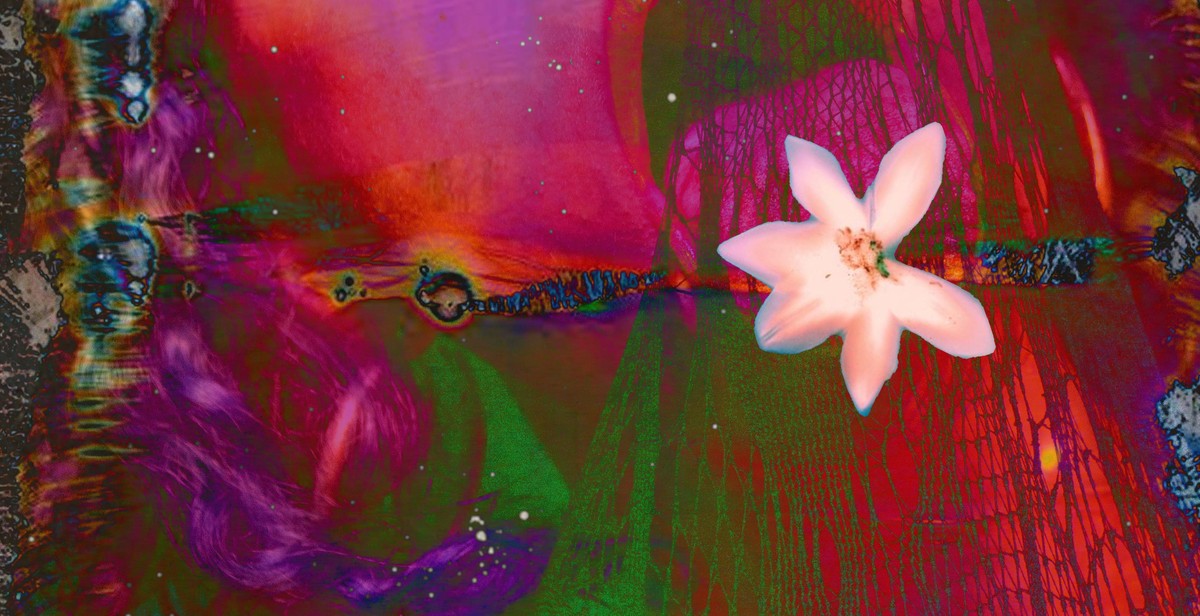How to Paint Abstract Art with Acrylics: An Introduction
Abstract art is a form of art that emphasizes the use of color, line, shape, and form to create a composition that is not representational of any particular object or scene. Instead, abstract art is focused on the artist’s interpretation of emotions, ideas, and concepts.
Acrylics are a popular medium for creating abstract art due to their versatility and fast-drying nature. They allow artists to experiment with different techniques and textures, and can be used on a variety of surfaces, including canvas, paper, and wood.
What is Abstract Art?
Abstract art is a departure from traditional forms of art that aim to represent the world realistically. Instead, abstract art is focused on the use of color, shape, and form to express emotions, ideas, and concepts. It is characterized by its use of simplified shapes, bold colors, and gestural brushstrokes.
Abstract art can be divided into two main categories: non-objective and semi-objective. Non-objective abstract art does not refer to any recognizable object or scene, while semi-objective abstract art includes recognizable elements that have been simplified or distorted.
Why Paint Abstract Art with Acrylics?
Acrylics are a popular medium for creating abstract art due to their versatility and fast-drying nature. They allow artists to experiment with different techniques and textures, and can be used on a variety of surfaces, including canvas, paper, and wood.
Acrylics also offer a wide range of colors and can be easily mixed to create new hues. They are also water-soluble, making them easy to clean up and work with. Additionally, acrylics are durable and long-lasting, making them a great choice for creating art that will stand the test of time.

Choosing the Right Supplies
When it comes to painting abstract art with acrylics, choosing the right supplies is crucial to achieving the desired result. Here are some important factors to consider:
Acrylic Paints
Acrylic paints are the most popular choice for abstract art due to their versatility and fast-drying properties. They come in a wide range of colors and can be thinned with water or medium for different effects. It’s important to choose high-quality acrylic paints to ensure the vibrancy and longevity of your artwork.
Brushes
The type of brush you use can greatly affect the texture and style of your painting. For abstract art, it’s recommended to use a variety of brush sizes and shapes, including flat, round, and angled brushes. Synthetic brushes are a good option as they are durable and hold their shape well.
Canvas or Paper
Canvas is the most popular surface for acrylic paintings, but paper can also be used for a different effect. For abstract art, it’s important to choose a surface that can handle the layering and blending of colors. A stretched canvas or canvas board is a good option as it provides a sturdy surface to work on.
Palette
A palette is essential for mixing and blending acrylic paints. There are many options available, including plastic, glass, and disposable palettes. A large palette with ample space to mix colors is recommended for abstract art.
| 1. | Choose high-quality acrylic paints to ensure the vibrancy and longevity of your artwork. |
| 2. | Use a variety of brush sizes and shapes to achieve different textures and styles. |
| 3. | Consider using a stretched canvas or canvas board for a sturdy surface to work on. |
| 4. | Invest in a large palette with ample space to mix colors. |

Preparing the Workspace
Before you start painting abstract art with acrylics, it is important to make sure that you have a clean and organized workspace. This will not only help you focus on your art but also protect your surface and supplies.
Protecting the Surface
Acrylic paint can be messy and difficult to remove from surfaces, so it is important to protect your workspace. Cover your table or floor with a drop cloth or plastic sheeting to prevent any paint from staining or damaging the surface. You can also use old newspapers or cardboard boxes if you don’t have a drop cloth.
Setting Up the Easel
Setting up an easel can make painting easier and more comfortable. Choose a sturdy and adjustable easel that can hold your canvas securely. Make sure that the easel is placed on a level surface and adjust it to a comfortable height and angle for painting.
Organizing the Supplies
Organizing your supplies can help you work more efficiently and save time. Gather all the necessary supplies such as brushes, paints, palette, water container, and paper towels and arrange them in an organized manner. You can use a caddy or a tray to keep your supplies in one place and easily accessible.
By following these simple steps, you can create a comfortable and organized workspace that will help you create beautiful abstract art with acrylics.

Techniques for Painting Abstract Art
Creating abstract art can be a liberating and exciting experience for artists. It allows them to express their emotions and ideas through a non-representational form of art. In this section, we will discuss some techniques for painting abstract art with acrylics.
Layering and Blending Colors
One of the fundamental techniques for painting abstract art is layering and blending colors. This technique involves applying layers of paint on top of each other to create a complex and visually interesting composition. Artists can use a variety of tools such as brushes, sponges, or palette knives to blend and layer colors.
When layering colors, it’s important to keep in mind the color theory. Artists should choose colors that complement or contrast each other to create a harmonious or dynamic composition. They can also experiment with different opacities and translucencies of paint to create depth and texture.
Using Textures and Patterns
Another technique for creating abstract art is using textures and patterns. Artists can use a variety of tools such as stencils, stamps, or even natural objects to create interesting textures and patterns in their paintings. This technique adds visual interest and can also create a sense of movement in the painting.
Artists can also experiment with different techniques such as splattering, dripping, or scraping to create unique textures and patterns. This technique allows artists to create a spontaneous and unpredictable composition.
Creating Depth and Movement
Creating depth and movement is essential in abstract art. One technique for creating depth is to use contrasting colors and values. Artists can also create a sense of movement by using diagonal lines or shapes that lead the viewer’s eye around the painting.
Another technique for creating movement is to use a variety of brushstrokes and mark-making. Artists can use quick and energetic brushstrokes to create a sense of movement and vitality in the painting. They can also experiment with different brush sizes and shapes to create a variety of marks and textures.
| Techniques | Description |
|---|---|
| Layering and Blending Colors | Applying layers of paint on top of each other to create a complex and visually interesting composition |
| Using Textures and Patterns | Using a variety of tools and techniques to create interesting textures and patterns in the painting |
| Creating Depth and Movement | Using contrasting colors and values, diagonal lines, and a variety of brushstrokes and mark-making to create depth and movement in the painting |
Experimenting with Different Styles
Abstract art is all about experimenting and exploring different styles to create unique and expressive pieces. Here are some styles you can experiment with:
Geometric Shapes
Geometric shapes are a popular choice in abstract art. They can be used to create a sense of structure and order, or to create a jarring contrast with more fluid elements in your painting. Use masking tape or stencils to create clean lines and shapes, or freehand your shapes for a more organic feel. Play with different colors and sizes to create a dynamic composition.
Fluid Lines and Drips
Fluid lines and drips are a hallmark of abstract art. They can be used to create a sense of movement and energy in your painting. Use a thin brush or dropper to create delicate lines and drips, or experiment with larger tools like spray bottles or palette knives for a more dramatic effect. Try layering different colors and textures to create depth and interest.
Collage and Mixed Media
Collage and mixed media allow you to incorporate a variety of materials into your painting, including paper, fabric, and found objects. This can add texture and dimension to your piece, as well as create a sense of nostalgia or history. Experiment with different materials and techniques to create a unique composition.
| Style | Techniques |
|---|---|
| Geometric Shapes | Masking tape, stencils, freehand |
| Fluid Lines and Drips | Thin brush, dropper, spray bottles, palette knives |
| Collage and Mixed Media | Paper, fabric, found objects, layering |
Experimenting with different styles is a great way to keep your abstract art fresh and exciting. Don’t be afraid to try new things and push the boundaries of your creativity.

Adding Finishing Touches
Once you’ve completed the main painting, it’s time to add some finishing touches that will take your abstract art to the next level. Here are a few techniques to consider:
Adding Highlights and Shadows
Adding highlights and shadows to your painting can help to create depth and dimension. To add highlights, use a lighter color than the surrounding area and apply it sparingly to the areas that would naturally catch the light. To add shadows, use a darker color than the surrounding area and apply it sparingly to the areas that would naturally be in shadow.
Incorporating Contrast
Contrast is key to creating a visually interesting painting. Consider adding contrast by incorporating complementary colors or using high contrast values. You can also add contrast by varying the thickness of your paint application or using different brush strokes.
Signing and Sealing the Painting
Once you’re happy with your painting, it’s time to sign and seal it. Use a fine-tipped brush and a contrasting color to sign your name or initials in a discreet location. To seal your painting, apply a clear varnish or acrylic medium according to the manufacturer’s instructions. This will protect your painting from dust, dirt, and UV damage.
By following these tips, you can add the perfect finishing touches to your abstract art painting and create a work of art that you can be proud of.
Conclusion
Creating abstract art with acrylics is a fascinating and rewarding experience that allows you to express your creativity and emotions. By following the steps outlined in this article, you can develop your skills and techniques, experiment with different materials and colors, and create unique and stunning pieces of art.
Continuing to Explore Abstract Art
As you continue to paint abstract art with acrylics, you can explore different styles, techniques, and themes to expand your creativity and expressiveness. You can draw inspiration from other artists, nature, music, emotions, or anything that captures your imagination. You can also experiment with different tools, textures, and mediums to add depth and dimension to your paintings.
Sharing Your Work with Others
One of the benefits of creating art is the joy of sharing it with others. You can exhibit your paintings in galleries, showcase them online, or give them as gifts to friends and family. By sharing your work, you can receive feedback, support, and inspiration from others, and connect with a community of artists and art lovers.
| Benefits of Sharing Your Work | Ways to Share Your Work |
|---|---|
|
|
Remember, the most important thing about creating abstract art with acrylics is to have fun and enjoy the process. Don’t worry too much about the outcome or the critics; focus on expressing yourself and exploring your creativity.
